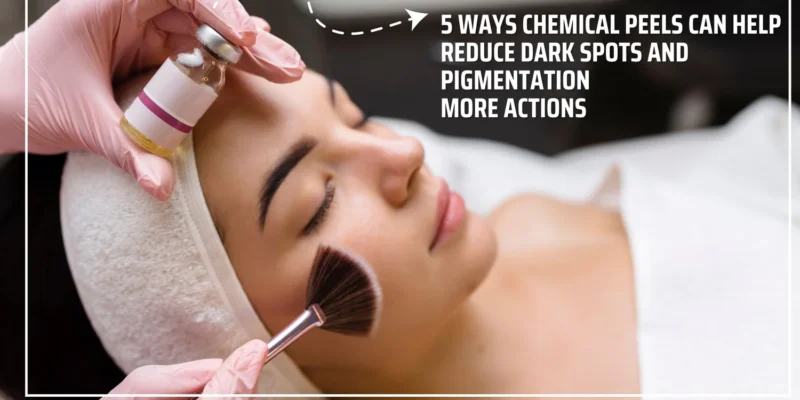In the quest for flawless and rejuvenated skin, chemical peelings have emerged as a popular cosmetic procedure. This non-invasive treatment offers a pathway to achieve smoother, brighter, and more youthful-looking skin. But what exactly are chemical peels, and how do they work? Let’s delve into the science behind this transformative skincare solution.
Understanding Chemical Peels: Chemical peels are dermatological treatments designed to improve the appearance and texture of the skin by applying a chemical solution to exfoliate the outermost layers. This process stimulates cell turnover, revealing fresher, healthier skin underneath. Chemical peels are categorized based on their depth of penetration: superficial, medium, and deep peels. Each type targets specific skin concerns, ranging from mild exfoliation to deep tissue regeneration.
The Science Behind the Glow: The magic of chemical peels lies in their active ingredients, which typically include alpha hydroxy acids (AHAs), beta hydroxy acids (BHAs), and trichloroacetic acid (TCA). AHAs, such as glycolic acid and lactic acid, work by loosening the bonds between dead skin cells, promoting gentle exfoliation and revealing a brighter complexion. BHAs, like salicylic acid, penetrate deeper into the pores, making them particularly effective for treating acne and congestion. TCA peels penetrate even further into the skin, triggering collagen production and addressing fine lines, wrinkles, and pigmentation.
The Treatment Process: Before undergoing a chemical peel, a thorough consultation with a qualified dermatologist or skincare professional is essential to determine the most suitable peel for your skin type and concerns. During the procedure, the skin is cleansed and prepped before the chemical solution is applied evenly. Depending on the type of peel, a tingling or stinging sensation may occur, which subsides after a few minutes. Post-treatment, the skin may appear red and flaky as the exfoliation process takes effect. It’s crucial to follow post-care instructions diligently, including avoiding sun exposure and using gentle skincare products to support the skin’s healing process.
Benefits Beyond Aesthetics: Beyond their cosmetic benefits, chemical peels offer therapeutic advantages for various dermatological conditions. They can improve the appearance of acne scars, diminish hyperpigmentation, and even out skin tone. Additionally, chemical peels can help manage certain skin conditions like acne and rosacea by reducing inflammation and controlling excess oil production. With regular treatments, chemical peels can maintain skin health and vitality, contributing to a radiant complexion over time.
Conclusion: Chemical peels represent a powerful tool in the realm of skincare, offering a versatile solution for addressing a myriad of concerns and achieving radiant, youthful skin. Understanding the science behind chemical peels empowers individuals to make informed decisions about their skincare journey. Whether seeking to reverse signs of aging, combat acne, or simply enhance skin texture, chemical peels offer a customizable approach to unlock your skin’s full potential.

